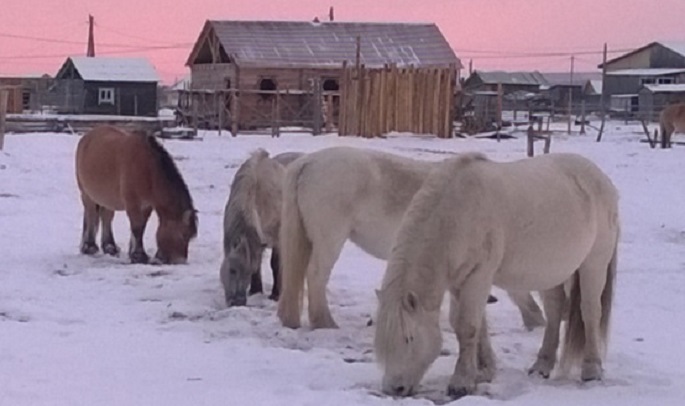Shared jenes save humans, beasts from extreme chill
Published : 26 Dec 2018, 01:47
Updated : 26 Dec 2018, 18:01
Both humans and domestic animals have adapted to the Arctic conditions, which can be identified in their genes, said a research study.
The research conducted by the researchers at the University of Lapland and the Natural Resources Institute Finland (Luke) said, as a result of human-made and natural selection Arctic domestic animals have been adapting to the harsh conditions, which now have become investigated and described using approaches of genetics, anthropology and art.
If a Yakutian cattle bull refuses to go out when the temperature has dropped down to minus 50°C, it will not be qualified as a breeding animal in Yakutia, eastern Siberia.
Juha Kantanen, a research professor of Luke, has collected a large set of biological materials and data for the study of the genomes of northern domestic animals, reindeer, cattle, and horses during his expeditions in a project called Arctic Ark.
“Adaptation and the close relationship between humans and animals are especially pronounced in the Arctic conditions. The animals which have adapted relatively fast also assisted humans in adapting to the conditions,” Kantanen said.
The Arctic Ark researchers collected samples from domestic animals in Lapland, Arkhangelsk and Yakutia. In addition to reindeer, other domestic animals are kept and bred in the research areas. Kantanen’s research team attended slaughtering during the coldest winter months in Yakutia to collect research materials for studies of gene functions in different tissues in extreme cold.
“Our results show that partially the same genes have been under natural selection in the Arctic conditions in reindeer, horses, cattle and even humans. These genes involve the ability to withstand cold, metabolism and immunity. We refer to this as convergent evolution or similar evolution of different species,” Kantanen said.
Florian Stammler, a research professor at the University of Lapland’s Arctic Centre, has been leading the anthropological studies of the Arctic Ark. The researchers lived with the local people and participated in their animal husbandry to determine which characteristics are valued in animals in the Arctic region.
“People in the north value the same characteristics in all domestic animals: independence, ease of care and the animals being able to survive on a meagre diet. The animals behave well in a herd, are able to find their own pastureland and know how to return back home.”
According to Stammler, domestic animals are bred by means of negative selection in Arctic communities.
Individual animals are not picked based on the desired characteristics: instead, unsuited animals are eliminated from the herd. The significance of genetic diversity is also understood in Yakutia, and it is ensured.
“Neighbours often switch animals, animals from specific areas are highly valued and people want bulls from these areas, for example. In many cases, animals from as far away as possible are obtained for the herd. These are very deliberate and systematic strategies,” Stammler described,
Stammler emphasises the fact that native breeds and their breeding strategies have much to offer to agriculture. Volume is not the key in Arctic local communities. Instead, there is a sustainable attitude towards the input-output ratio.
“Native breeds are a living example of how useful diversity is. For example, Northern Finncattle produce much less milk than the commercial breeds, but consume less feed, require less medication and require less space in cowsheds. Many of the operating methods from our research areas could be utilised in the development of sustainable agriculture in Finland.”
Artist Anu Osva attended the research trips to Yakutia and depicted in her work the northernmost domestic animals and the people who take care of them. “The three small Yakutian villages close to the Verkhoyansk mountain region and the people and animals in these coldest areas of the world really touch me. The artistic works I did there involve the Arctic area – animals as human companions -- genetics and adaptation in general,” Osva said.


